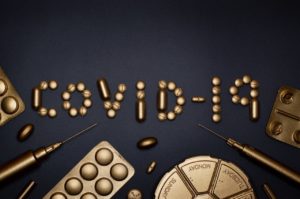Introduction
A lucid dream is a dream in which one is aware of the fact that the one is dreaming, and most probably have control over their actions during the period. In this paper we can find the investigation of the association between lucid dreaming with different forms of sleep fragmentation, by the means of self-assessment of participants as well as through physiological studies.
Top Down Approach: General Explanation From Previous Studies
In earlier researches it has been found that the lucid dreaming occurs mostly during REM sleep. REM (Rapid eye movement) is the stage of sleep in which most of the dreams occur. An episode of REM sleep may last from 5 minutes to over an hour. It should be discretely known that during REM sleep, the brain regions associated with metacognition(a higher cognitive process that provides awareness of one’s own thought process), show decreased activation; however during lucid dreaming metacognitive processes occur.
A reasonable explanation for the association between lucid dreaming and REM sleep would be the assumption that the activation of prefrontal brain regions when waking persists into subsequent sleep periods, thereby increasing the occurrence of metacognitive processing. Such hybrid state between wakefulness and subsequent REM sleep would thus be expected to be associated with lucid dreaming; that to be studied in a Top-down approach.
Several lines of research already suggest that rapidly alternating sequences of wake and sleep periods can be associated with incidence of lucid dreaming. The method involving such a process collectively known as `wake-back-to-bed´ is popularly used to induce lucid dreams intentionally to assist many researches.
Study One: Sleep Fragmentation and Lucid Dreaming
To begin the research, the first study was performed to investigate the association of sleep fragmentation and awakenings with lucid dreaming. 202 participants with mean age 28.91 recruited through internet forums were asked to rate their sleep on a 5-point scale; 1 assigned for highly continuous sleep and 5 for highly fragmented one. Same participants were also surveyed for their dream recall (remembrance) frequency and the lucid dreaming frequency on a 9-point rating; 0 representing ‘never in a year’ and 8 representing ‘almost every night’.
Participants were further asked for the number of their awakenings at night as well as the continuity of their sleep.
The survey yielded the result that on average, the dream recall frequency as well as the frequency of lucid dreaming of respondents was 15.8 times per month and 2.7 times per month(almost once a week) respectively. Partial correlation analyses revealed a significant/strong positive correlation between lucid dreaming frequency and number of awakenings(r=0.25; p< 0.001). Here r is coefficient of correlation and p-value being very small(small enough for rejecting null hypothesis) suggests that the obtained value of ‘r’ is statistically significant.
On the other hand, the association between lucid dreaming and self-assessed amount of sleep fragmentation was not quite significant(r=0.05; p=0.244). However, intraindividually, participants did report having increased lucidity when their own sleep was determined as being fragmented. This drawing is relatively mixed but tentatively supports the association between fragmentation and lucidity.
Study Two: Relationship Between Polyphasic Sleep and Lucid Dreaming
The second study was conducted to investigate the association between ‘Polyphasic‘ sleep and lucid dreaming. ‘Polyphasic’ refers to sleeping multiple times over the course of 24 hours.
22 volunteers were interviewed on their lucid dream frequency during monophasic vs. polyphasic sleep practices. Among them, 10 participants included in the ‘in-house group’ were to switch to polyphasic sleep, whereas 12 participants from the ‘external group’ had already tried polyphasic sleep rhythms before. The polyphasic sleep rhythm scheduled 6 naps of 20 minutes each, evenly across the 24 h cycle.
Participants reported average of 2.64 dreams including 0.5 lucid dreams per day during and 0.81 dreams including 0.05 lucid dreams per day after the end of polyphasic sleep rhythm. Paired t-tests indicated that the differences in both absolute(t=2.31 p=0.016) and relative(t=2.3 p=0.016) lucid dreaming frequency between polyphasic and monophasic sleep rhythms were significant.
For instance, the value of t=2.31 suggests that there is a significant difference between absolute dreaming frequency in monophasic and that in polyphasic sleep practices. It means, the t- value is large enough to reject the ‘null hypothesis’ which otherwise defaults to the statement that they are not different .
In contrast, a pearson correlation, denoted by ‘r’ did not find a significant association between change in sleep quality and change in lucid dreaming frequency. Even though, radically(thoroughly) polyphasic sleep allows for the extended periods of wakefulness preceding an increased number of sleep episodes, and for the REM periods following wakefulness more closely and thereby increasing the chance of lucid dreaming.
Study Three: Adoption of PSQI and DLQ in Study of Relationship Between Sleep Quality and Lucid Dreaming
The third study was performed to investigate the relation between sleep quality and lucid dreaming. Sleep quality was defined by Pittsburgh Sleep Quality index(PSQI) which consists of 19 questions related to sleep habits(e.g. How often during the past month have you had trouble sleeping?) A global score out of 21 points is generated based on the answers, with higher global PSQI scores indicating a worse sleep quality.
Similarly, lucidity was measured by the Dream Lucidity Questionnaire(DLQ) which consists of 12 items assessing the awareness of the dream and different types of controls. DLQ scores were out of a maximum of 40 points.
The mean PSQI score was 4.48 indicating no strong complaints about sleep quality. The mean DLQ score across all subjects was 5.46. However, no significant correlation between global PSQI scores and the average DLQ score was found(r=0.1 p=0.53). However, if a connection between sleep quality and lucid dreaming does exist, it can be concluded that PSQI tool is not apt to measure it.
Study Four: Physiological Experiment
The fourth study adopted the results of EEG(electroencephalogram) to obtain the scores of sleep macrostructure variables(e.g. no. of arousals, total wake time, no. of wake-REM transitions etc.) as well as participants’ insights of lucid dreaming.
Participants experienced an average of 1.17 WREM sequences in the last two hours of the night of experiment. A significant correlation was found between the number of WREM sequences, each of them lasting for 5 minutes, and the lucidity factor insight.(r=0.357 p=0.026). But there was no correlation between the lucidity insight and either no. of awakenings or total wake time (in contrast, the third study mentioned earlier, did find a correlation between lucid dreaming and self assessed number of awakenings).
The lucidity insight was, however, found to be stronger when the final 4 hours of sleep with WREM length each of 10 minutes were analyzed. This result tentatively supports a link between sleep fragmentation and dream lucidity, at least for the case of WREM sequences that was validated physiologically. In contrast, from the third study, no connection was found between lucid dreaming and self- assessed sleep quality(sleep fragmentation in particular).
Conclusion
The findings indicate that the presence of a relatively specific sleep architecture might be the instigator of dream lucidity, which may manifest it but doesn’t require it. It is important to note that the wake-REM sequences and their mechanisms that might underlie dream metacognition should be considered as a distinct variable from fragmentation per se. The effectiveness of the wake-back-to-bed technique, and unusual sleep schedule might be reconciled within the context of sleep fragmentation, however, with a meaningful distinction between the categories of sleep fragmentation.
Citation to Original Paper
Gott, Jarrod & Rak, Marin & Bovy, Leonore & Peters, Emma & Hooijdonk, Carmen & Mangiaruga, Anastasia & Varatheeswaran, Rathiga & Chaabou, Mahmoud & Gorman, Luke & Wilson, Steven & Weber, Frederik & Talamini, Lucia & Steiger, Axel & Dresler, Martin. (2020). Sleep fragmentation and lucid dreaming. Consciousness and Cognition. 84. 102988. 10.1016/j.concog.2020.102988.










